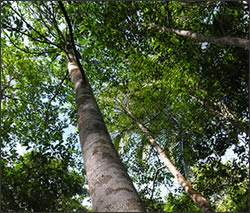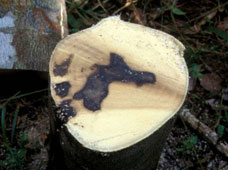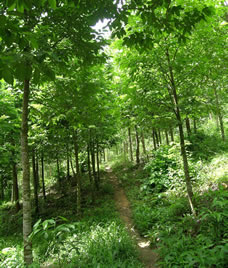What is Agarwood?

Aquilaria Trees

Cut plantation tree with cultivated agarwood
Agarwood is an aromatic resinous wood that forms within some Aquilaria trees. It is also produced in a closely related genus called Gyrinops. Both of these trees, classified in the Thymelaceace family, grew sparsely in the rain forests of Asia but are now considered endangered in most countries and rarely found in natural forests.
For thousands of years this resinous wood was burned as incense during meditation and prayer to help people achieve a higher level of consciousness and a state of deep inner peace. Many religious groups including Buddhists, Muslims, Hindus, Taoists and Christians consider agarwood the most precious of materials. Agarwood incense is said to have a calming effect and to increase body energy or "chi". It is also an important component of traditional Chinese and Malay medicine. Its pleasing fragrance has been enjoyed throughout the world and has developed into a beautiful aromatic art form in Japan called the koh-doh ceremony.

Plantation of Aquilaria trees in the mountains of Vietnam
Not all agarwood is exactly the same and slight differences in aroma are common. Incense masters form the 16th century identified several types and named them Rakoku, Manaban, Sasora, and Sumatora with flavors like spicy, sweet, salty, and bitter. The one that is considered to have the most elegant scent, Kayara, combines all the flavors together in the same piece of agarwood. Today’s incense masters can determine the regional origin of the agarwood from its aroma and can even differentiate slight variances that may be found in agarwood from within one region. The essence of agarwood is due to complex compounds produced by the tree called sesquiterpenes and chromones. The type and quantity of the many diverse compounds in the resinous wood create the fragrance. These compounds are produced as a defense mechanism in the living tree to ward off microbial attack and are developed only under very specific circumstances. New methods to cultivate agarwood in plantation grown trees stimulate these naturally occurring compounds. Normally produced in old growth trees and taking decades to accumulate, the resin can now be produced in young trees. Farmed trees in small plantations and home gardens are being used to produce the cultivated agarwood in the Scented Mountain Products. For more information on agarwood cultivation and projects to help the poor in developing countries of Asia see the University of Minnesota’s agarwood research project web page.
Reference links::